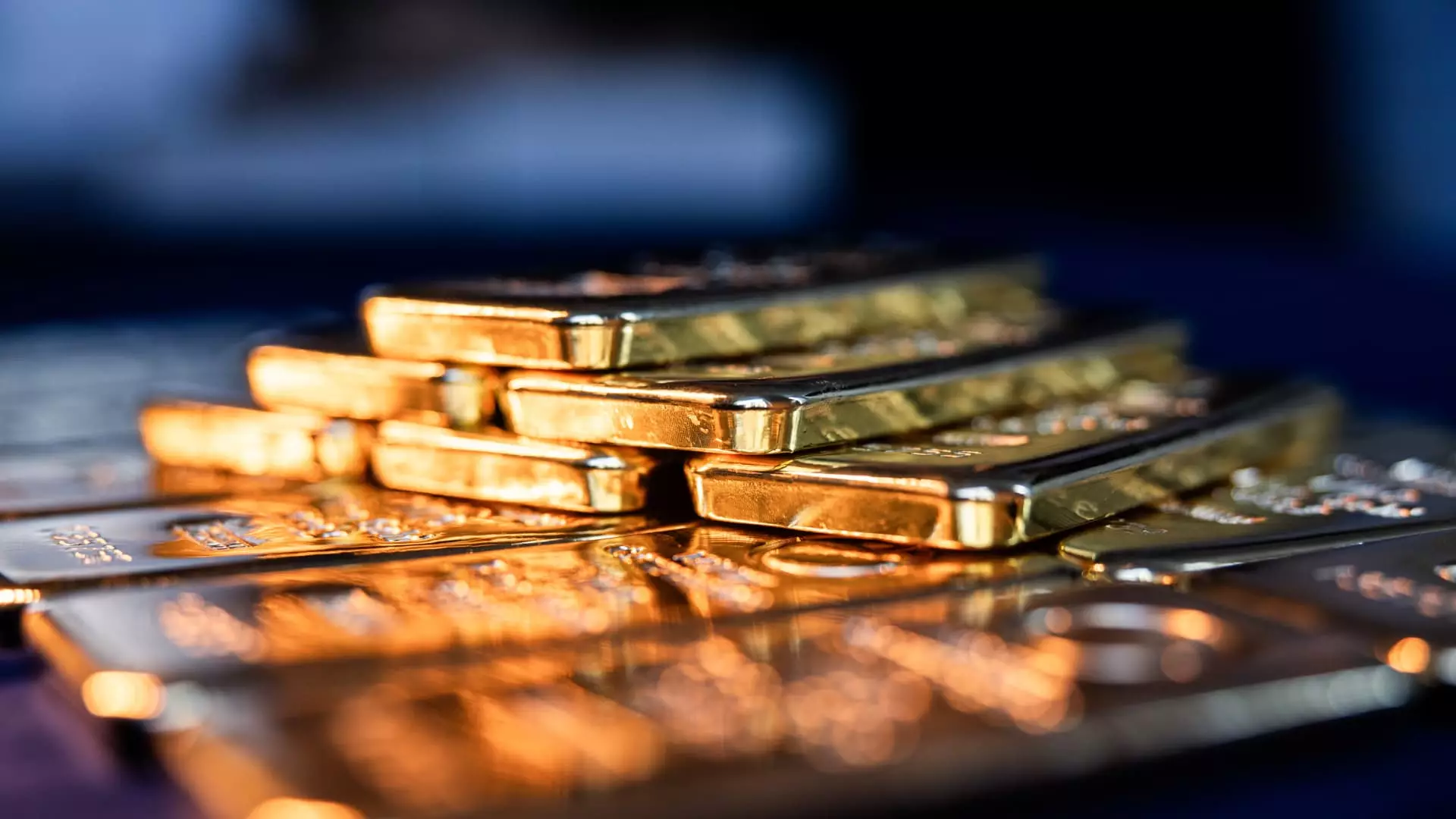In times of political unrest and financial turbulence, gold often emerges as a symbol of stability—a haven where investors flock to safeguard their wealth. Historically regarded as a hedge against inflation and currency devaluation, gold has proven resilient even amid economic chaos. Yet, despite its shimmering facade, there are critical aspects that potential investors must consider before diving headlong into what may appear to be a safe bet. As the prices catapult toward an alarming $3,000 an ounce, we must question whether we are witnessing the zenith of gold’s appeal or merely a temporary spike in a commodity fueled by collective anxiety.
Record Highs: A Cause for Concern
Gold prices are soaring to unprecedented levels this year, achieving over a dozen record highs, with a remarkable 21% increase thus far. While the alluring numbers glow brightly in the eyes of investors, seasoned analysts caution that this excitement may be premature. Sameer Samana, a leading figure at the Wells Fargo Investment Institute, highlights a pivotal point: many investors may be arriving late to a crowded party, chasing returns that may soon fizzle into disappointment. The collective optimism enveloping gold right now might signify an inflated market rather than a lasting value proposition. Such exuberance, while appealing, often masks the risk of an impending downturn—a warning that should resonate deeply with would-be investors.
The Trade War: A Double-Edged Sword
The backdrop of escalating tariffs and international trade wars adds another layer of complexity to the gold investment landscape. As the U.S. implements steep tariffs on imports from China, fears of a global economic downturn loom larger than ever. Such geopolitical uncertainties amplify the allure of gold as a protective asset; however, it is this very volatility that could render gold’s value unpredictable in the coming months. While analysts remain divided—some forecasting further acceleration in gold prices, and others anticipating a peak—the overarching sentiment suggests a reality often overlooked: gold does not always perform well during recessions. Rather, it is typically bonds that shine during economic downturns, raising the question of whether gold is truly the safety net it claims to be.
Ownership Dilemmas: Physical Gold vs. ETFs
Investors face a key decision: should they buy physical gold or diversify through gold-focused exchange-traded funds (ETFs)? Many financial advisors recommend the latter, suggesting that bullion-backed ETFs like SPDR Gold Shares (GLD) and iShares Gold Trust (IAU) offer a more liquid and practical approach to gaining gold exposure without the burdens of storage and security. Perhaps more concerning, physical gold could prove burdensome during uncertain times—if the financial system faces collapse, its utility becomes a questionable safety net. This conundrum generates conflicting sentiments: an investment in physical gold can provide psychological security, yet it comes with significant responsibilities and costs of safeguarding, not to mention potential liquidity challenges.
Jewelry: A Silver Lining or Just a Temporary Bauble?
Interestingly, the gold jewelry market presents a different narrative worth exploring. Fine jewelry, particularly pieces with high precious metal content, retains value better and can often serve as an emotional and financial investment. Renowned brands like Cartier and Tiffany offer the promise of both aesthetic allure and potential financial gain, suggesting that high-quality jewelry might indeed be a more trustworthy investment than plain bullion. However, this avenue isn’t without its pitfalls—craftsmanship and artistry heavily influence value retention, adding another layer of complexity to an already volatile sphere.
Expert Opinions: A Call for Caution
Financial experts echo the sentiment that, despite heightened interest in gold, maintaining severe caution is paramount. Many advisors encourage retaining cash reserves to endure market volatility rather than hastily reallocating resources toward gold investments. The emphasis should be on strategic planning, where gold may serve as a component of diversification rather than becoming the focal point of an investment strategy. While the impulse to seek refuge in tangible assets is understandable during turbulent times, this flight to safety must be measured against a broader understanding of one’s financial goals and a comprehensive grasp of the market dynamics in play.
The Weight of Emotional Decisions
What remains most frustrating for many investors is the psychological grip that gold holds during economic uncertainty. The allure of tangible assets can overshadow sound investment principles, leading individuals astray. The psychological comfort of owning gold, or precious jewelry, can cloud rational judgment, making it essential for investors to tread carefully. While decisions regarding gold investments often blend emotion with sound financial reasoning, understanding the broader implications in an ever-shifting economic landscape is crucial for safeguarding one’s financial future.
In a world teetering on the edge of uncertainty, gold may sparkle brilliantly, but a closer examination reveals that its luster could be deceiving. The quest for stability must be balanced against a tough analysis of market realities—especially in volatile times like these.


Leave a Reply